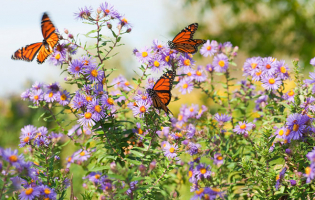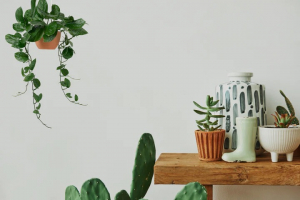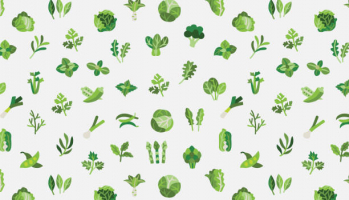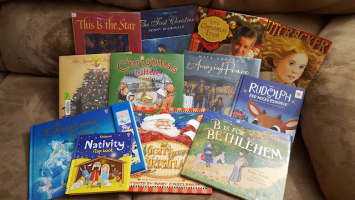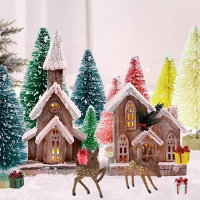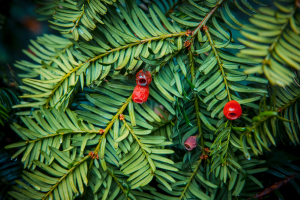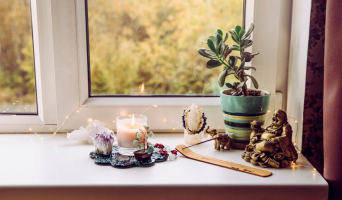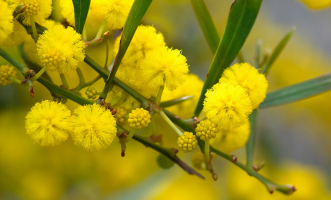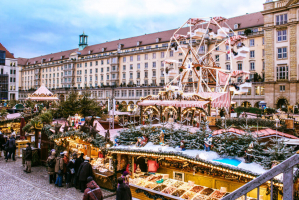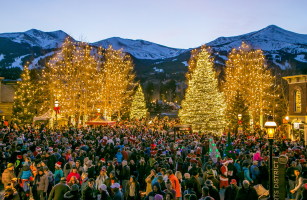Top 8 Jolly Christmas Plants
Around the holidays, many flowers, shrubs, trees, and other plants are planted and given as gifts. The look and maintenance requirements of these seasonal ... read more...plants vary greatly. Some are little and may be kept indoors as potted plants, while others are big trees and shrubs that require a large garden space. However, as living ornaments throughout the winter season, they all give off a festive feeling. Let's discover the jolly Christmas plants now.
-
Holly is the sole extant genus in the Aquifoliaceae family, with approximately 570 species of flowering plants. Ilex is the most diverse woody dioecious angiosperm genus. The species range from the tropics to temperate zones and include evergreen or deciduous trees, shrubs, and climbers. Ilex aquifolium, the popular European holly used in Christmas decorations and cards, is the type species. Because holly can adapt to many sorts of conditions, it can be found in all locations. It is robust to most weather conditions and tolerates all sorts of soil. It is recommended to plant in the autumn to stimulate rooted, but you may plant in the winter till April if frost is avoided.
The genus is found across the world's temperate and subtropical areas. It comprises trees, shrubs, and climbers with evergreen or deciduous leaves and small flowers. Its distribution expanded throughout the Tertiary era, and many species have adapted to laurel forest settings. This genus' plants feature simple, alternating glossy leaves with a spiky leaf border. The flower is greenish white and has four petals. They are dioecious, with male and female blooms on separate plants.
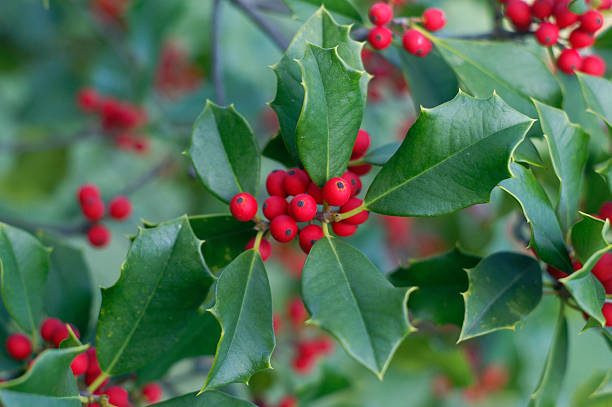
istockphoto 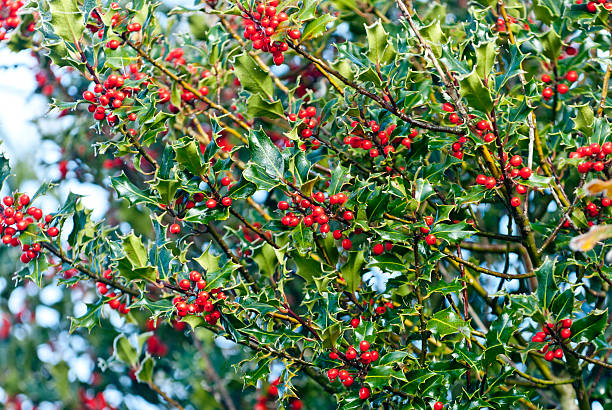
istockphoto -
The poinsettia is a commercially valuable flowering plant species in the Euphorbiaceae spurge family. The poinsettia, native to Mexico and Central America, was first described by Europeans in 1834. It is well-known for its red and green leaves and is frequently used in Christmas flower arrangements. Its popular English name comes from Joel Roberts Poinsett, the first United States minister to Mexico, who is credited with bringing the plant to the United States in the 1820s. Poinsettias are shrubs or small trees that grow to heights of 0.6 to 4 meters (2.0 to 13.1 ft). Despite popular belief, the poinsettia is not poisonous to pets or children.
Exposure to the plant, including intake, usually has no impact, however it might produce nausea, vomiting, or diarrhea. Wild poinsettias thrive on mid-elevation, Pacific-facing hillsides from Mexico to southern Guatemala. However, one population in the Mexican state of Guerrero is regarded to be the progenitor of most farmed populations. Wild poinsettia populations are greatly dispersed due to uncontrolled deforestation in their environment. The Aztecs grew them for use in traditional medicine. They've become synonymous with the Christmas season and are popular seasonal decorations. Every year, around 70 million poinsettias of various cultivars are sold in the United States over a six-week period.
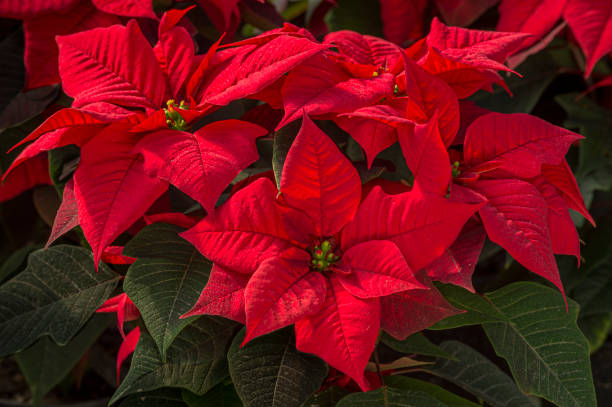
istockphoto 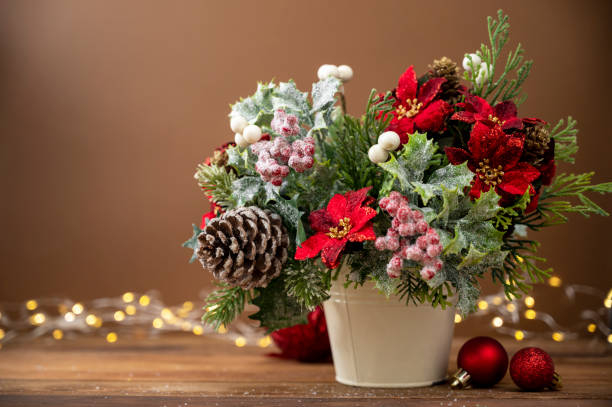
istockphoto -
The Douglas fir is an evergreen conifer of the Pinaceae family. It is endemic to western North America and goes by several names, including Douglas-fir, Douglas spruce, Oregon pine, and Columbian pine. In big parks and gardens, the plant has decorative significance. Since the 1920s, it has been widely used as a Christmas tree, and the trees are mainly cultivated on plantations. Douglas Fir is also becoming increasingly popular in the art of bonsai.
Since the 1920s, the Douglas-fir has been the most common Christmas tree species in the Pacific Northwest. Almost all trees were taken from forest lands during the next 40 years. Since the 1950s, there has been a tremendous shift from growing trees in the wild to cultivating them on plantations. Today, few trees come from forest lands. An inner Rocky Mountain strain (P. menziesii var. glauca) has been widely planted in numerous midwestern state Christmas tree plantations. It is recommended because it can resist harsher growth conditions than seed sources from the Pacific Northwest.
It is still one of the most popular Christmas tree species in the United States. It is supplied to the majority of states, as well as the Hawaiian Islands, Guam, and several Asian markets. Plantation trees are typically shorn and yield a harvest in 7 to 10 years, depending on the location and growing region. Douglas-fir is a robust softwood that is commonly utilized for construction applications. The sapwood ranges from white to pale yellow, whilst the heartwood is orange-red with a strong contrast between earlywood and latewood.
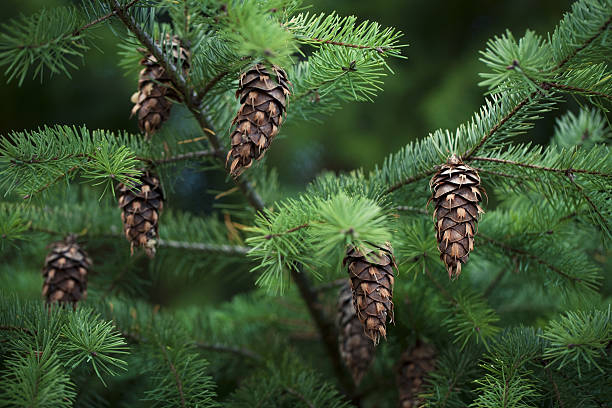
istockphoto 
istockphoto -
Cylindropuntia leptocaulis, often known as the desert Christmas cactus, desert Christmas cholla, pencil cactus, or tasajillo, is a cholla cactus species. The shrubby Cylindropuntia leptocaulis plants grow to a height of.5 to 1.8 m (1.6 to 5.9 feet) when supported by desert trees. Branches are thin, about 3-5 mm wide. At each areole, there are 0-1 (sometimes up to 3) spines. Flowers bloom in the late afternoon and are light yellow or greenish yellow with crimson tips. The shrub produces red berries in December, which can be intoxicating when ingested. The Apache, Chiricahua, and Mescalero grind the fruits and combine them with a beverage to induce narcotic effects.
Cylindropuntia leptocaulis plants thrive in sandy or gravelly soil, and you must replicate those circumstances when cultivating them. Cylindropuntia leptocaulis has spines on its leaf and it is advisable to protect yourself before contact with the plants unless they are likely to damage you. Cylindropuntia leptocaulis is found in deserts, grasslands, chaparral, and forests across the Southwest and many states in Northern Mexico.
The Christmas cactus joins Norfolk Island pine trees and poinsettias as popular winter plants. While it may appear to be an eccentric holiday plant, the Christmas cactus, also known as holiday cactus, is a pleasant sight in the heart of winter. The plant's fleshy segmented stems have flattened leaves that are slightly serrated on each side. Tubular blooms bloom on the ends of each stalk in late autumn or early winter.
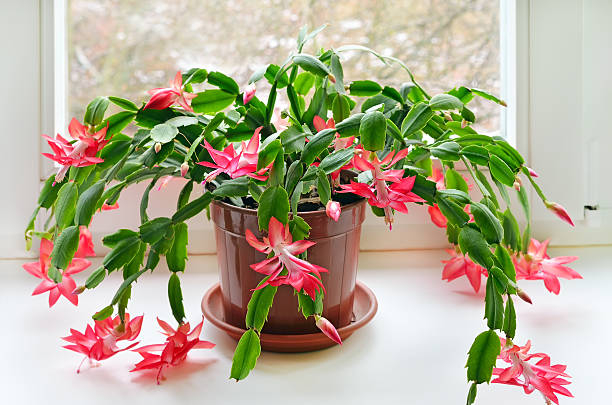
istockphoto 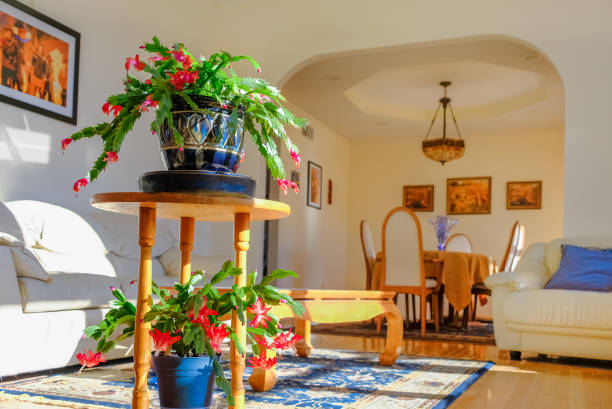
istockphoto -
Mistletoe is the popular name for plants of the order Santalales that are obligate hemiparasitic. They are linked to their host tree or shrub by a structure known as the haustorium, which allows them to absorb water and nutrients from the host plant. The plant Viscum album (European mistletoe, of the family Santalaceae in the order Santalales) was initially given the name mistletoe; it is the only species native to the British Isles and much of Europe. Viscum cruciatum, a similar species with red rather than white fruits, is found in southwest Spain and southern Portugal, as well as Morocco in North Africa and southern Africa. Viscum album was introduced to Northern California in 1900, despite the fact that the genus Viscum is not native to North America.
Phoradendron leucarpum, the eastern mistletoe unique to North America, is a separate genus in the Santalaceae family. The smooth-edged, round, evergreen leaves of European mistletoe are borne in pairs along the woody stem, and it produces waxy, white berries in clusters of two to six. The eastern mistletoe of North America is similar, but has shorter, wider leaves and longer clusters of berries with ten or more berries. Over the centuries, the term has been broadened to include many other species of parasitic plants with similar habits found in other parts of the world and classified in different genera and families, such as the Misodendraceae of South America and the primarily tropical Loranthaceae of the southern hemisphere.
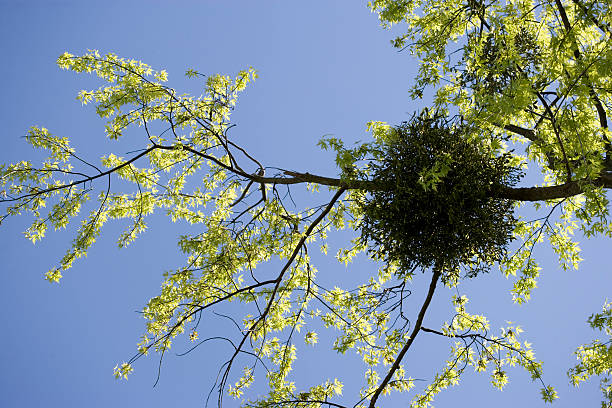
istockphoto 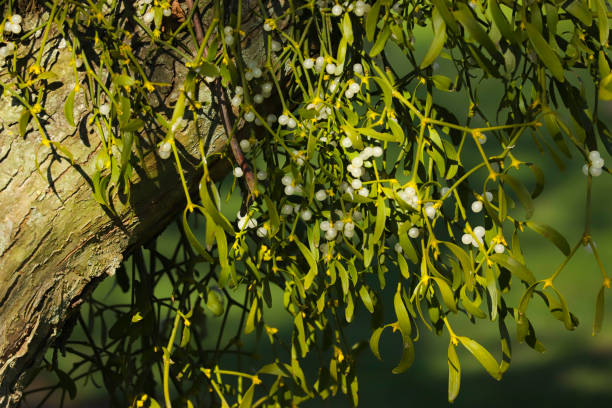
istockphoto -
Picea abies, sometimes known as the Norway spruce or European spruce, is a spruce endemic to Northern, Central, and Eastern Europe. It features branchlets that normally droop downwards and the biggest cones of any spruce, ranging from 9 to 17 cm in length. It has a tight relationship with the Siberian spruce (Picea obovata), which replaces it east of the Ural Mountains and with which it readily hybridizes. The Norway spruce has a broad distribution due to its wood, and it is the primary Christmas tree in various nations throughout the world. It was the first gymnosperm genome to be sequenced. The specific epithet abies means "like Abies, Fir tree" in Latin.
Norway spruce is one of the most frequently planted spruces, both inside and beyond its natural area, and one of Europe's most commercially significant coniferous species. It is utilized as a decorative tree in parks and gardens. It is also commonly planted as a Christmas tree. Every Christmas, the Norwegian capital city, Oslo, sends a Norway spruce to the cities of London (the Trafalgar Plaza Christmas tree), Edinburgh, and Washington, D.C., which is set in the city's major square.
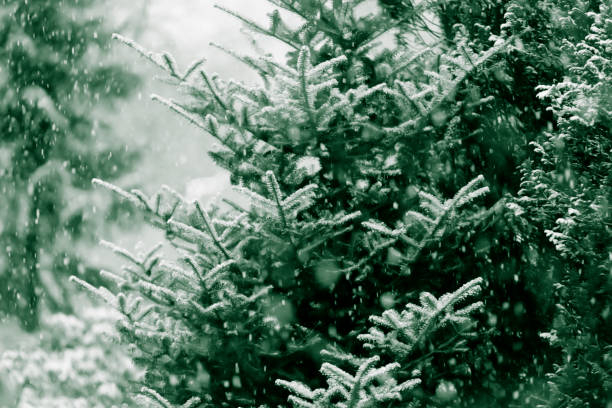
istockphoto 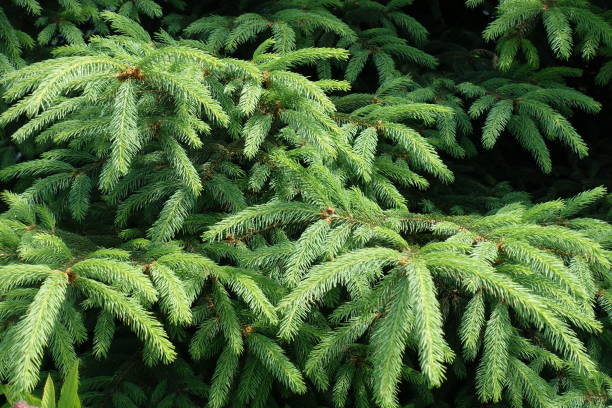
istockphoto -
Christmas rose (Helleborus niger), also known as winter rose or black hellebore, is a tiny toxic perennial herb of the Ranunculaceae family that blooms from late October to early spring, frequently in the snow. It has evergreen compound leaves with seven or more leaflets arranged like the fingers of a hand that grow directly from the plant's top. The beautiful blooms, with five colored sepals, are 5 to 7.5 cm (2 to 3 inches) wide, white to pinkish green, and occur in winter, typically at Christmas, in mild regions, and late spring in colder countries. Improved cultivars include "Altifolius", which is somewhat taller, and "Potter's Wheel", which has wider sepals.
In warm climes, the Christmas rose thrives in wet soil and moderate shade, or in protected settings in colder climates, and it is occasionally induced to bloom in a greenhouse. In Europe, the closely related Lenten rose (Helleborus orientalis), which blooms later and has cream to purple flowers in clusters of two to six, is popular.b
Christmas rose bushes appreciate a shaded and protected garden area. Many gardeners also discover that the plants are picky about soil pH, preferring neutral or slightly alkaline soil. These growth conditions for Christmas roses can be obtained by adding soil additives such as lime. Planting areas should be well-drained and have enough of air movement. Once planted, Christmas rose maintenance is minimal. Where the growth circumstances for Christmas roses are very severe, the leaves may exhibit symptoms of damage during the coldest months of the year. Damaged leaves can be removed to create place for new growth, which will restart when the time is perfect. Exposure to direct sunshine can also cause leaf damage.
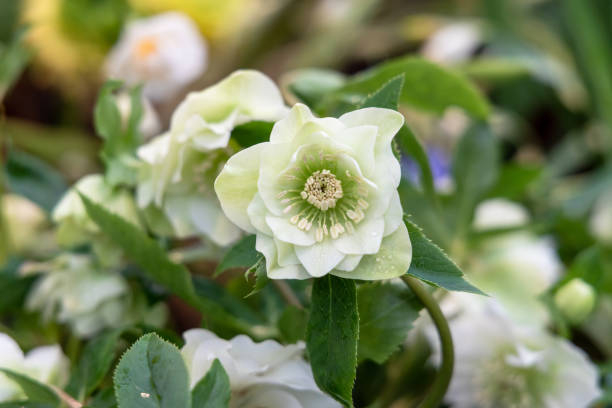
istockphoto 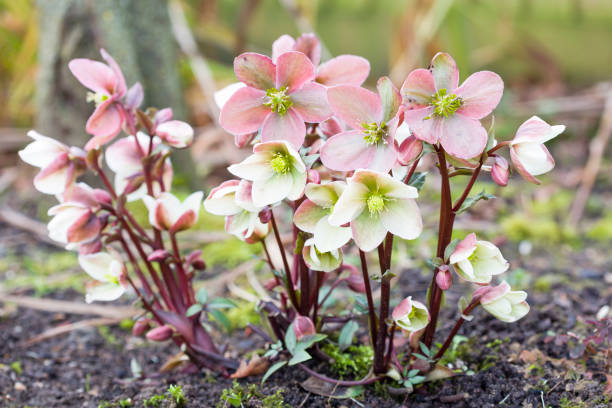
istockphoto -
Cedar, any of four species of ornamental and timber evergreen conifers of the genus Cedrus (family Pinaceae), three endemics to Mediterranean mountain ranges and one to the western Himalayas. Many other coniferous trees classified as "cedars" resemble real cedars in that they are evergreen and have aromatic, sometimes crimson or red-tinged wood that is decay-resistant and insect-repellent in many situations. The ubiquitous "cedarwood" of pencils, chests, closet linings, and fence posts comes from the huge arborvitae, incense cedar, and some junipers (viz., red cedar; q.v.); an oil derived from the wood is used in many cosmetics.
True cedars include the Atlas cedar (C. atlantica), Cyprus cedar (C. brevifolia), deodar (C. deodara), and Lebanon cedar (C. libani). They are towering trees with big, uneven crowns of spreading branches and large trunks. Young trees have smooth, dark-gray bark that ages to become brown, fissured, and scaly. The needlelike, three-sided, stiff leaves are dispersed along the long shoots and form dense tufts at the tips of the short spurs. Each leaf has two resin channels and lasts three to six years on the tree. The huge, barrel-shaped, resinous female cones, which are greenish or purple in color, are carried on short stalks and are covered by wide, thin, tightly overlapping woody scales, each with a clawlike protrusion.
Cedarwood is light, soft, resinous, and long-lasting, even when exposed to soil or damp. It is a significant structural wood in its native regions but is rarely used abroad. The fragrant oil is produced during the distillation of the wood. Many Atlas cedar and deodar species are popular ornamentals in North America, particularly along the Pacific and Gulf coasts.
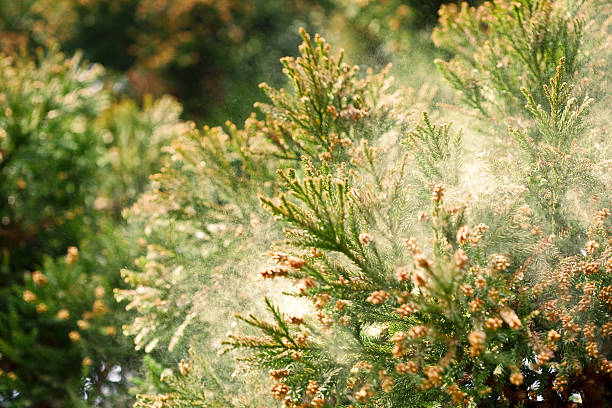
istockphoto 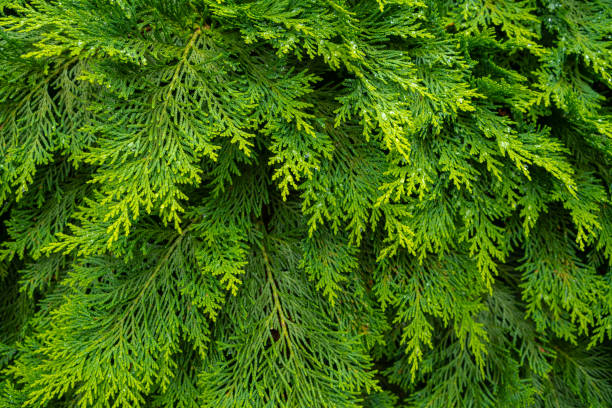
istockphoto










